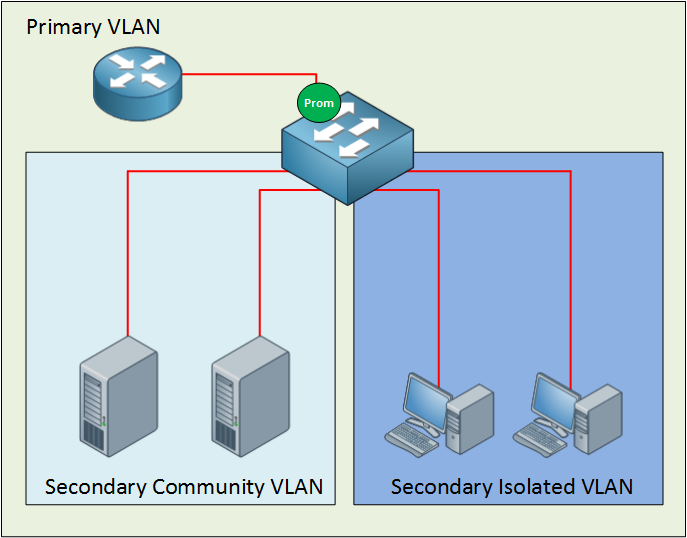VLAN - Private VLAN
Private VLANs (PVLANs) are a feature used in networking to provide isolation between devices within the same VLAN. They are commonly used in environments where you need to enforce a strict separation of network traffic, even though the devices are on the same VLAN, and thus the same subnet. There are various components and concepts involved in the understanding and the implementation of PVLANs. Here's a diagram as well as a detailed breakdown of these key concepts:

-
Primary VLAN: This is the main VLAN to which all private VLANs are associated. It acts as the conduit for traffic to and from secondary VLANs.
-
Secondary VLANs: These are the VLANs that are associated with the primary VLAN. There are two types:
- Isolated VLANs: Devices in an isolated VLAN cannot communicate with each other, but they can communicate with a promiscuous port (described below). This is useful for situations where you need to isolate individual hosts or systems from each other.
- Community VLANs: Devices within the same community VLAN can communicate with each other and with a promiscuous port, but they cannot communicate with devices in other community VLANs or isolated VLANs.
-
Promiscuous Port: This is a port on a switch that can communicate with all devices in the primary VLAN, regardless of whether they are in an isolated or community VLAN. It's typically used for connections to routers, firewalls, or other common gateways.
-
Use Cases: Private VLANs are often used in environments like data centers, hosting facilities, or for Internet of Things (IoT) devices where you need to enforce strict network separation. They help in reducing the number of VLANs needed, simplify network design, and enhance security by isolating devices at the network level.
Private VLANs are a powerful tool for network segmentation and security, but they require a switch that supports this feature and careful planning to implement effectively.
A simpler feature that can achieve similar results on a small scale (within the scope of a single switch) is the protected ports feature.
Links
https://networklessons.com/switching/private-vlan-pvlan-cisco-catalyst-switch